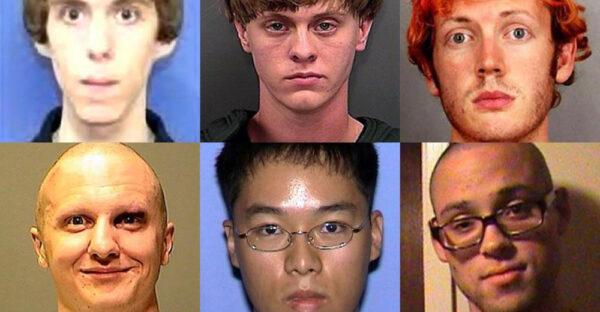In a shocking turn of events, a young individual who was not seen as a threat by law enforcement authorities is now making headlines as one of the youngest mass shooters in history. The tragic incident has left many questioning how such a devastating event could have been prevented. This story illustrates the chilling consequences of underestimating potential threats and the urgent need for improved measures to identify and address warning signs before they escalate.
Table of Contents
- - Failure to Recognize Warning Signs: The Police Oversight in Identifying Potential Threats
- – Understanding the Motivation Behind Youth Mass Shooters: A Deep Dive into Psychological Factors
- – Strengthening Preventative Measures: Recommendations for Enhancing Threat Assessment Protocols in Law Enforcement
- – Addressing the Root Causes of Violence: The Role of Mental Health Support and Community Intervention
- Q&A
- To Wrap It Up

– Failure to Recognize Warning Signs: The Police Oversight in Identifying Potential Threats
The recent tragic event involving one of the youngest mass shooters in history has raised questions about the police’s failure to recognize warning signs. The shooter, who was only 15 years old, was not seen as a potential threat by law enforcement, despite displaying troubling behavior leading up to the incident.
This oversight in identifying potential threats is a concerning issue that needs to be addressed. It is crucial for law enforcement agencies to be vigilant and proactive in assessing and responding to individuals who exhibit red flags that may indicate a risk of violence. Failure to do so can have devastating consequences, as seen in this heartbreaking situation.

- Understanding the Motivation Behind Youth Mass Shooters: A Deep Dive into Psychological Factors
Following a tragic incident that shook a community to its core, law enforcement officials are now grappling with the aftermath of what could potentially be one of the youngest mass shooters in history. The individual in question, whose identity has not yet been released to the public, managed to evade detection by authorities despite exhibiting alarming behavior in the days leading up to the violent outburst. This disturbing revelation has prompted a closer examination of the psychological factors that may have motivated such a heinous act.
As investigators delve into the background of the suspect, it is becoming increasingly clear that a complex web of issues contributed to his descent into violence. From untreated mental health conditions to a sense of alienation and disenfranchisement from society, the young perpetrator’s journey from troubled youth to mass shooter highlights the urgent need for a more nuanced understanding of the root causes behind such tragedies. By shedding light on the psychological nuances at play, experts hope to prevent similar incidents from occurring in the future and offer insights into how best to address the underlying motivations driving youth violence.

– Strengthening Preventative Measures: Recommendations for Enhancing Threat Assessment Protocols in Law Enforcement
Recent events have highlighted the critical need to enhance threat assessment protocols within law enforcement agencies to prevent tragedies like the one unfolding in our community. As authorities grapple with the aftermath of yet another mass shooting committed by an individual who slipped through the cracks, it is imperative to reevaluate and strengthen preventative measures to identify and intervene before it’s too late.
Recommendations for enhancing threat assessment protocols in law enforcement include:
- Implementing comprehensive mental health screenings for all officers and personnel.
- Enhancing training programs to recognize early warning signs of violent behavior.
- Establishing a centralized database for tracking individuals with a history of concerning behavior.

– Addressing the Root Causes of Violence: The Role of Mental Health Support and Community Intervention
The recent tragic incident involving a young individual carrying out a mass shooting has once again brought into focus the importance of addressing the root causes of violence. While law enforcement officers failed to recognize the threat posed by the individual, it is evident that mental health support and community intervention could have played a crucial role in preventing such a devastating outcome.
**Key Points:**
- The need for better mental health support services in identifying and assisting individuals at risk of violent behavior
- The importance of community intervention programs in providing early intervention and support for individuals experiencing mental health issues
- The significance of addressing systemic issues that contribute to the escalation of violent behavior
Q&A
Q: What is the article about?
A: The article discusses the case of a young man who was not perceived as a threat by the police, but later went on to potentially become one of the youngest mass shooters in history.
Q: How old was the perpetrator at the time of the shooting?
A: The perpetrator was a young man at the time of the shooting, potentially making him one of the youngest mass shooters in history.
Q: Why did the police fail to see him as a threat?
A: The police reportedly failed to see the young man as a threat due to his lack of previous criminal history or indicators of potential violence.
Q: What are the implications of this case for law enforcement?
A: This case highlights the importance of not underestimating individuals based on their age or lack of prior criminal history, as they may still pose a serious threat.
Q: How does this case fit into the larger issue of mass shootings in the United States?
A: This case serves as a reminder of the unpredictability of mass shooters and the challenges faced by law enforcement in identifying and preventing such acts of violence.
To Wrap It Up
As the investigation into the tragedy continues, authorities are left grappling with the question of how a young man who went unnoticed by law enforcement could go on to commit such a devastating act. The horrific events serve as a sobering reminder of the complexities and challenges faced by our society in identifying and preventing acts of violence. Our thoughts are with the victims and their families as they navigate this unimaginable loss. Stay tuned for updates on this developing story. Thank you for trusting USA TODAY for your news coverage.
